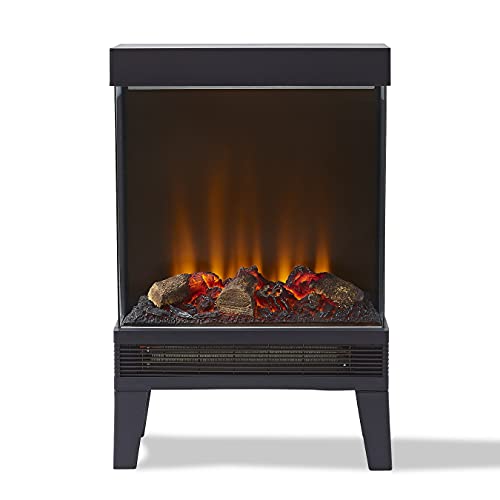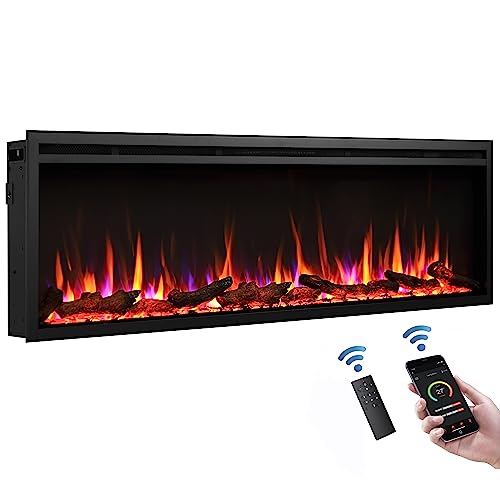
Fireplaces And Stove
Add a review FollowOverview
-
Founded Date September 27, 1937
-
Sectors Retail & Consumer Products
-
Posted Jobs 0
-
Viewed 28
Company Description
7 Essential Tips For Making The Most Out Of Your Bio Ethanol Fireplace
Bio Ethanol Fireplaces
Ethanol fireplaces are great for bringing a cozy feel to any room without the expense of structure work or gas supply. They are also the most secure kind of fire you can find.
If you use bio-ethanol fuel that has been specifically designed for your fire and follow the safety guidelines your fireplace will be safe to operate.
Installation is easy
Ethanol fires are a quick and easy option for homeowners who want to change the look of their living space or create a focal point for their home decor. They do not require a flue, and don’t create dangerous smoke which means you don’t need to worry about the build-up of soot on your walls or ceilings.
Whether you opt for the complete fire suite – for example, Mano Mano’s Adam Solus Fireplace Suite in Oak with Colorado Bio Ethanol Fire in Black from PS569 – or an independent model that can be moved from room to room (such as the Planika Petit, PS191) Installation is simple and does not require any assistance from a specialist. All you need to do is make sure that the ceiling or wall is strong enough and follow the guidelines for the model you have chosen.
Most fireplaces made of ethanol that are wall-mounted have the hardware necessary to mount them either like a flat screen TV or recess into the wall. It will take an experienced professional approximately one hour to put in the brackets, extensions and locate the studs.
You can also pick between manual and automatic bio ethanol burning devices. An automatic burner will keep the fuel away from the flames, which means it will burn longer without risk of running out or overheating. Manual burners operate the same as fireplaces, with the exception that you’ll need matches or lighters in order to ignite the flames.
It’s important to remember when choosing a bio ethanol burner, the burner should be covered with non-combustible material. This will ensure that nothing touches the burning fuel. If you don’t cover the burner, the flame could get too hot and cause damage to the fireplace.
The Ethanol fire is a fantastic choice for those who want an impressive feature to enhance their home but don’t have the money or time to install wood or gas fireplaces. They are great for new or renovated homes where chimney breasts were removed. They don’t create soot or ash, which means there’s no maintenance issues.
Styles and designs
There are a number of different styles and designs that bio-ethanol fireplaces are available in. Some are more traditional in their wood-burning look, whereas others are designed to be sleek and modern. No matter what style, each type offers the same benefits: authentic flame ambience without smoke or toxic gases.
Ethanol fires can be wall-mounted or freestanding. Freestanding models are more mobile and can be moved around the room in any direction you like. Wall-mounted models, on other hand, are anchored to the wall and may require special mounting equipment. They also must meet certain distances between flammable materials and the unit.
The fire is started through a burner pan, which is located in the middle of the fireplace. Fuel is poured into this pan, and the fire is then lit with an extended lighter. It takes around 15 minutes to get the fire up to its full flame potential. Once the fire is lit you can relax and enjoy your home’s warm atmosphere.
Some ethanol fire places have heat settings that can be altered. This lets you alter the amount of heat that your fireplace produces.
Another benefit of ethanol fires is that there is no need for a chimney or flue. This makes them an excellent option for older homes or modern homes that do not have chimney breasts or traditional fireplaces. Bio-ethanol fires do not release harmful gasses or ash, which are dangerous to people who suffer from respiratory issues.
Installing bioethanol fireplaces in your home is also simple. While the exact installation time depends on the model you choose, most are installed in a short time. You can opt for a portable freestanding fireplace that can be taken with you when you relocate. This is a great option for living arrangements that are temporary. The ease of installation is an important aspect for many buyers, and it is something that should not be ignored when looking for an upgrade to your fireplace.
No flue
The main benefit of bio ethanol over traditional wood or natural gas fires is that they don’t require a chimney for operation. As a result, there is no risk of chimney fires which could be caused by the accumulation of tar or an obstruction in the flue.
A bio-ethanol fireplace doesn’t produce many particles, which could cause harm to the air. This is beneficial for those suffering from allergies or asthma. Another advantage is that there’s no smoke that is produced by the fire which means it doesn’t produce a bad smell in the room.
Unlike a wood-burning fireplace, bio ethanol fires don’t lose heat through the chimney, and therefore can generate a tremendous amount of heat for its size. This means you can keep your furniture near the fire without having to worry about catching a flame, which could be dangerous for any valuables.
 There are a variety of designs available for a bioethanol freestanding fireplace. You can choose a wall-mounted model for a sleek, modern look or a recessed one that blends into the design of your room.
There are a variety of designs available for a bioethanol freestanding fireplace. You can choose a wall-mounted model for a sleek, modern look or a recessed one that blends into the design of your room.
Another thing to think about is whether you’d prefer either a manual or automatic burner. A manual burner requires that you ignite the fuel from the reservoir. An automatic burner will automatically light the fire when the tank is empty.
When you’re done using your bio ethanol fireplace, it is important to let the flames completely burn out and to wait until the fireplace is cool before refilling. Otherwise the ethanol will evaporate and you’ll need to start again.
The majority of manufacturers advise that you allow at least 45 minutes between refilling your fire, to ensure that you have enough time to remove the flames and ensure all materials that are flammable are kept away from the flame. To avoid any accidents, store any ethanol fuel that you have left out of reach of children and pets.
Maintenance ease
The bioethanol fuel is poured into the burner, and then ignited. The heat and flame created by the burning fuel can be controlled with the slider. (Not all models have this feature). By adjusting the amount of oxygen supplied to the fire, you can change the speed at which the fuel is burned and how high the flame burns.
As the fuel burns it releases some soot, but this is easily cleaned by wiping the fireplace with a soft cloth. The only other thing to do is to ensure that the burner is topped up with the right fuel and ensure that it’s kept away from dangerous materials or objects.
Another benefit of bioethanol fires is that you can put them almost anywhere, without having to worry about chimneys or building regulations. This gives you a lot of flexibility when designing your home and also where you would like to relax in the warmth of your fireplace. You can also choose an open-air model that can be moved.
Wall-mounted bio ethanol fireplaces are able to be incorporated into walls easily, and certain models can be rotated by 180 degrees so you can direct the flame and heat to the desired space of your room. You can even put an electronic remote control on certain models to control the entire thing from the comfortable sofa.
A majority of bioethanol fireplaces that are mounted on walls are fitted with brackets to allow them to be affixed to an unfinished ceiling or a sloping one. This lets you place the fireplace wherever you want it while being in a position to turn it on or off, adjust the flame height, and adjust the temperature with the remote control.
 When you’re not using the fireplace with ethanol, be sure to shut it off and keep it away from any flammable items or materials. Also, don’t pour additional fuel inside the burner until it’s cooled to room temperature. Always be careful when handling the fire as it is very hot.
When you’re not using the fireplace with ethanol, be sure to shut it off and keep it away from any flammable items or materials. Also, don’t pour additional fuel inside the burner until it’s cooled to room temperature. Always be careful when handling the fire as it is very hot.